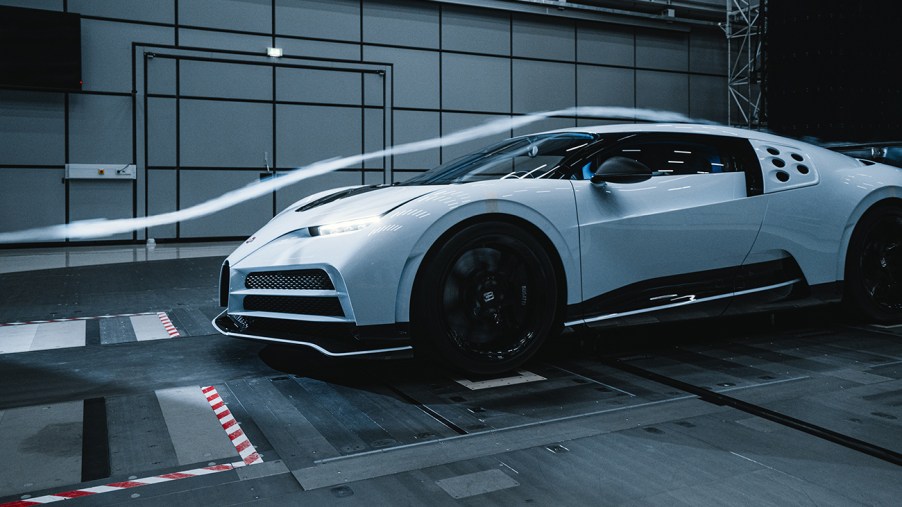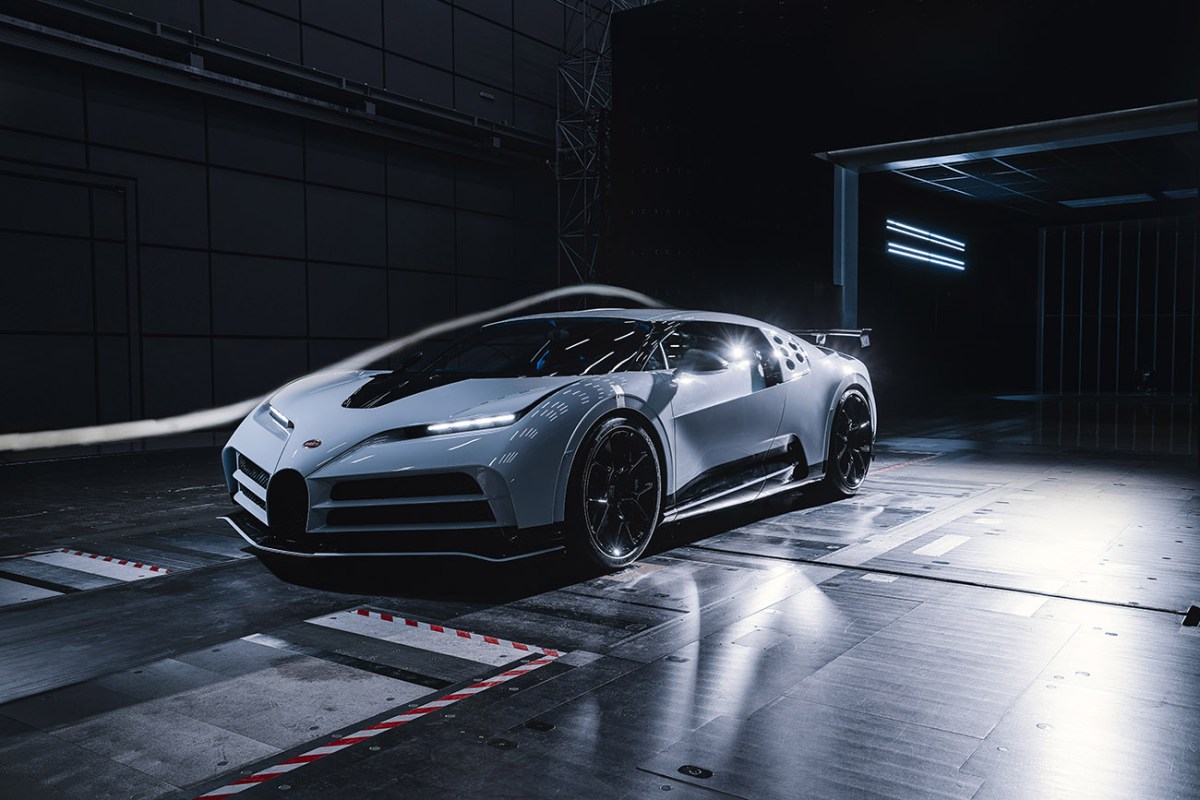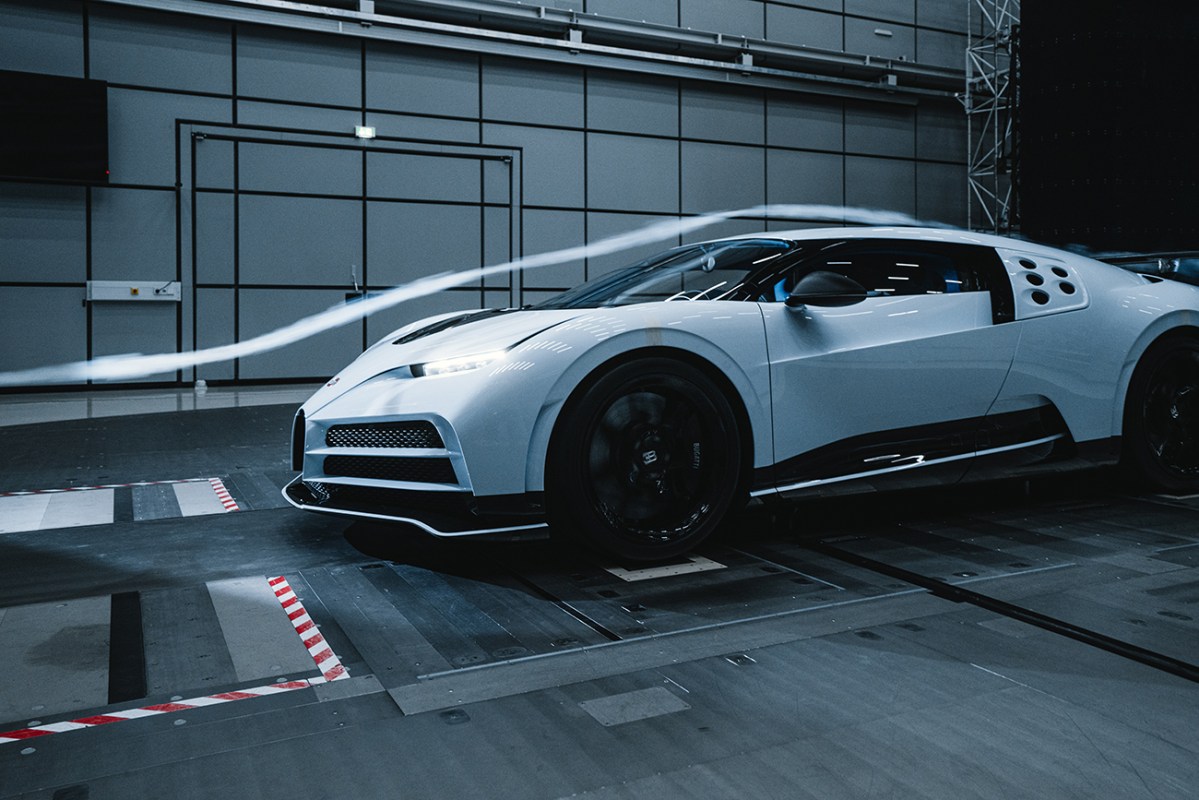
Watch Bugatti Centodieci Ace A Wind Tunnel Test
Bugatti is easily the most aspirational of aspirational hypercar brands. There are few production cars that are more powerful or more expensive than what Bugatti will release every few years. Since the Veyron, Bugatti has continued a slow drip of hypercars that constantly push the limits of what can legally be driven on public roads.
With the Chiron, Bugatti took a slightly different approach by utilizing the Chiron’s platform to create limited-edition one-offs or “few-offs” to keep the interest of its billionaire clientele. Some of those limited cars are track-only affairs like the Bugatti Bolide while the Centodieci is something totally different.
The Bugatti Centodieci is an homage to EB110

Some people think that the Bugatti Veyron was the first car from the French brand to utilize four turbochargers. That would be incorrect. The Bugatti EB110 took advantage of quad-turbochargers on its 3.5 liter V12 way back in 1991. In that respect, it could be said that the EB110 was ahead of its time. The EB110’s power and tech earned it poster car status and was likely hung on many walls throughout the 90s.
The Bugatti Centodieci is a limited-edition tribute to the legend of the original EB110 hypercar. The Centodieci’s exterior styling has several visual touchstones that harken back to the EB100. The most noticeable styling cues are the front bumper and the vents that sit just behind the c-pillars. Underneath the bodywork, the Centodieci is essentially a Bugatti Chiron. The same 16-cylinder, quad-turbo engine is mounted to the rear of the cockpit. The chassis underneath is identical to the Chiron as well. The entire point of the Centodieci is its unique aerodynamic package that borrows from the original EB110.
The Centodieci has a successful wind tunnel test
Despite the fact that Bugatti is only going to produce ten examples of the Centodieci, they are still running the car through a full battery of tests that any other mass-production car from their brand would endure. That includes on-track testing at high speeds and laboratory testing such as putting the Centodieci in a giant wind tunnel to test its aerodynamic effectiveness.
“It makes no difference to us engineers whether we are developing a hyper sports car for one, ten or 500 units – the effort is the same, as we have and want to meet, even exceed the quality and safety standards applicable to mass production,” explains André Kullig, Technical Project Manager for one and few-off projects at Bugatti.
What purpose does the wind tunnel serve?

The wind tunnel Bugatti used to test the Centodieci is capable of subjecting the hypercar to winds in excess of 300 km per hour (186 mph). The tunnel utilizes a 9,100 horsepower engine to generate those wind speeds.
It is all to ensure that the bodywork of the Bugatti Centodieci not only provides enough downforce but sends enough airflow into the engine bay to help keep the W16 engine cool at high speeds.
“No matter what speed and what driving situation, the Centodieci is sportily neutral and can be managed at all times in spite of its immense power,” says André Kullig.
Each of the ten Bugatti Centodieci hypercars will command a price of $8.9 million so we suppose we can’t blame them for making sure each one is as close to perfect as they can get it.


